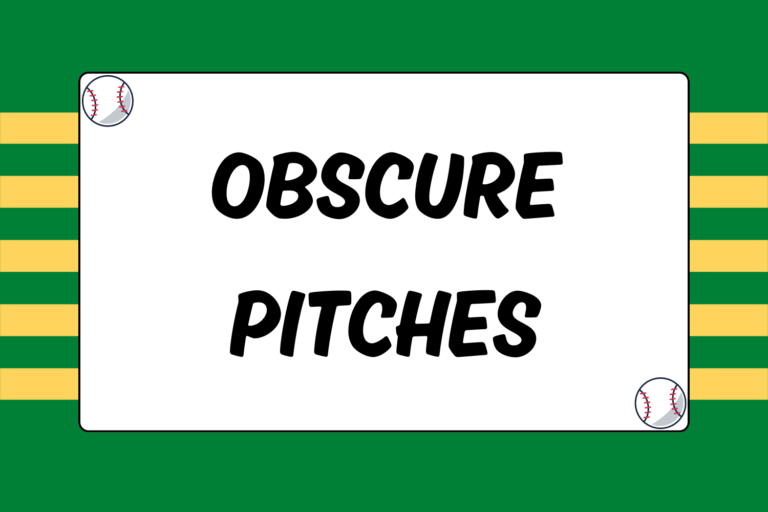If you’ve ever pitched in a baseball game, you know that the quality of the pitcher’s mound is extremely important to your performance. There are two types of mounds that are particularly troublesome: Mounds made entirely of soft dirt, and mounds with huge holes in front of the rubber and at the landing area.
Diligent maintenance on your pitcher’s mound, however, can prevent any possible issues. Repairing a mound after use is not an exceptionally laborious task, but it’s one that you should do after every game or practice.
Now, how you fix the mound depends on how it was originally constructed. The best pitcher’s mounds are made from a base of hard clay, which can hold up to repeated use better than plain dirt. There are plenty of mounds, however, that have a dirt base. If your mound falls into this category, you can still follow the same steps below; simply use dirt instead of clay to fill in the holes, and be particularly thorough because those holes will likely be larger on a dirt mound.
Equipment
Repairing a pitcher’s mound is a job that really only takes one person to complete. Before you get started, make sure you have the necessary equipment and materials. In many cases, the following items will be available at your field:
- Broom
- Rake
- Tamp
- Hose with running water
- Bag of mound clay
- Towel/burlap sack
If you don’t have access to all of these items, you may have to get creative. For example, if you don’t have a tamp, find something else with a flat edge. If you’re lacking in extra clay, spray some water on excess dirt to moisten it, and use that to fill your holes.
Hot Tip: Protect the Mound
Pristine mounds have two mortal enemies: Pitchers and Mother Nature. You can repair the damage a pitcher does in a matter of minutes, but the weather can be far more vengeful — and a soggy mound is practically unusable. The best way to protect your mound from wind and rain is to invest in a mound tarp and get in the habit of covering your mound each day after you repair it.
Step 1: Sweep out the Holes
When repairing a mound, you really only need to focus on the damaged areas. In most cases, after a baseball game, there will be a hole right in front of the rubber and another hole several feet down, at the landing area. Start by taking your broom (you can use a rake or even your hands if you don’t have a broom) and sweeping out all the loose dirt and clay from the holes. The more thoroughly you sweep out the holes, the easier it is for the new clay to adhere to the mound.
Step 2: Water in the Hole!
Take your hose and lightly spray the empty holes. You don’t need to get the whole mound wet; this is simply to make the base clay moist so that it binds more easily to the new clay. If you’re only working with dirt (and not clay), make a pile of extra dirt — this will be used to fill in your holes. Then water your extra dirt until it becomes just moist enough that it binds together.
Step 3: Fill the Holes with Clay
Next, pour some of your replacement clay into the empty holes, and spread it out evenly. You can fill it a little higher than ground-level because the clay compresses when you tamp it. If you’re working with dirt, follow the same instructions. Rake your moistened dirt into the holes and spread it evenly. Dirt compresses even more than clay, so depending on the size of your holes, you may need a lot of extra dirt.
Step 4: Tamp the Clay
Use your tamp to pack down the clay (or dirt), but you’ll also need a towel or burlap sack. You can’t press the tamp directly on the ground because the wet clay will stick to the bottom. Burlap is a useful material because it’s durable and won’t stick to the ground, but you can also use a towel or some other type of mat. Lay the burlap down flat over the area you need to tamp, and don’t be afraid to pound the clay down hard. You may even need to tamp the area twice in order to make sure it looks flat, even, and as good as new!
Step 5: Rake the Mound
Once you’re finished tamping, it’s time to put on the finishing touches. Rake a thin layer of dirt back over the areas you just tamped down. Then rake over the entire mound to clean up cleat marks and remove any pebbles or chunks of grass.
Step 6: Make It Wetter
Finally, grab the hose again and thoroughly water the entire mound. You don’t want to soak the clay — if any puddles accumulate, you’ve watered too much — but make sure the repaired areas get sufficiently wet so the clay can set more firmly. Regular and moderate watering prevents the dirt and clay on your mound from cracking and eroding over time.
Maintain Your Mound
Repairing your mound on a regular basis is a good habit to develop in order to keep your field in top shape. To boot, a well-maintained mound is much easier to pitch from. If you let your mound get soft or muddy, or allow large holes to develop, it will only hurt you and your pitchers. So take care of your mound and your mound will take care of you. If you invest in some decent field equipment, you can follow the steps in this guide and fix your mound in 15 minutes or less!





